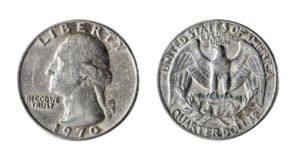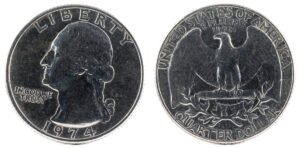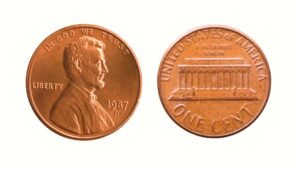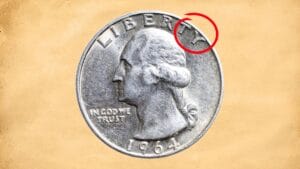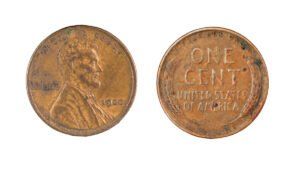While experts love the historically marked 1965 & 1967 Washington Quarters, the 1970 quarters are famous among first-time coin collectors. Why? Well, besides their high mintage and easy-to-recognize features, they have some unique errors that hike their resale value.
But do all such quarters have the same value despite their grade & condition? Or does the mint or proof mark affect the coin’s value in any way? Scroll down to find all your answers!
Key Takeaways
- Unlike the earlier silver Washington Quarters, the 1970 quarters use a composition of 91.67% copper & 8.33% nickel.
- 1970 Washington Quarter proofs have unique errors, such as the Canadian Planchet or double-struck errors, that can raise their cost up to $35,000!
- The 1970 Quarter was minted in two mints: Philadelphia and Denver (d-mint). Philadelphia quarters cost more, 30 cents—$2 for a regular coin.
- Different obverse, die, or thickness errors make a 1970 Quarter valuable & collectible.
The Historical Journey of the 1970 Washington Quarter
Despite using the same coin design as its previous counterparts, the 1970 Quarter faced some historical back & forths as follows:
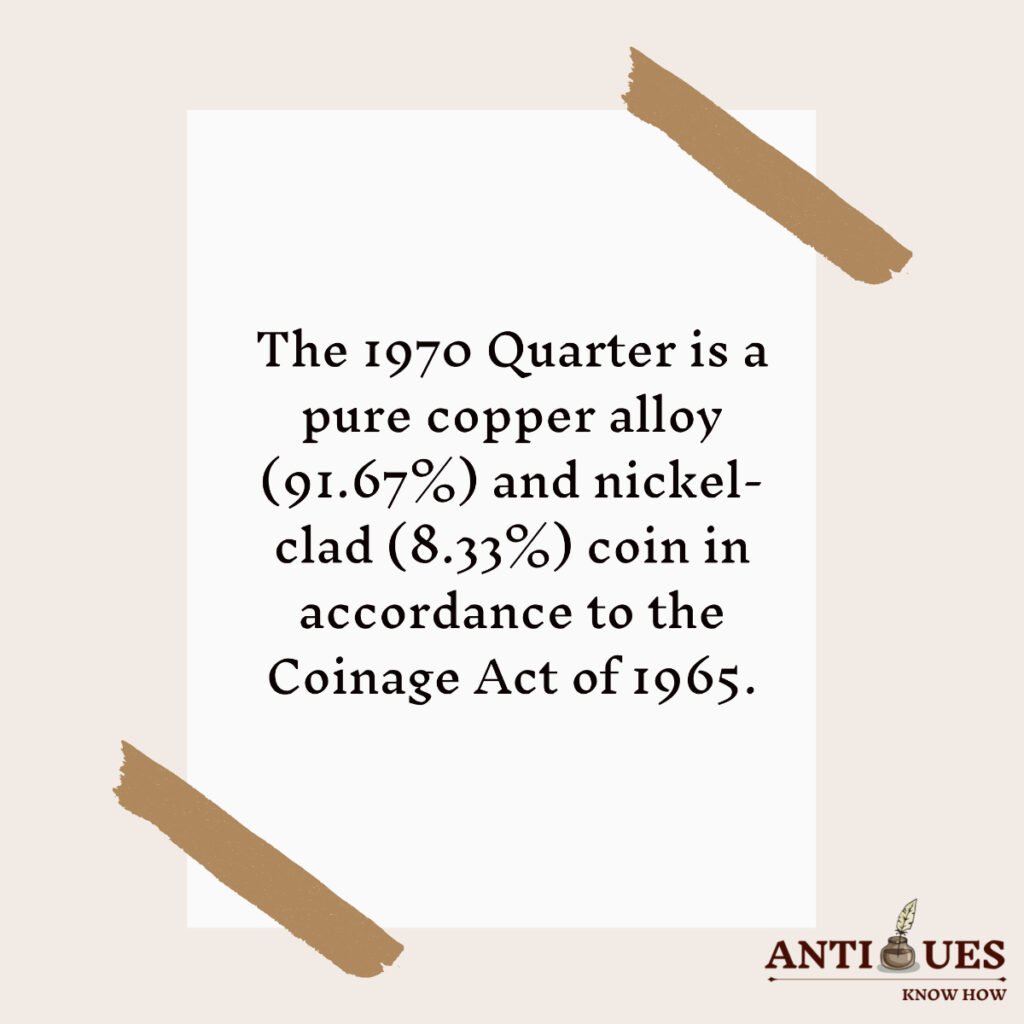
- 1932: The Congress initiated the first Quarter to honor the 200th birthday of George Washington, the first U.S. President. And as suggested by John Flanagan, the President’s bust-cameo on the obverse and an eagle on the reverse was finalized.
- 1934 – 1964: The Philadelphia and Denver mints produced about 3 – 10 billion quarters each year with a composition of 90% or 5.623 grams of silver and 10% copper. But this led to hoarding and remelting of the coins for the silver content.
- 1965: Lyndon Johnson, the 36th US President, passed the ‘Coinage Act’ (Sandwich Law) that made it compulsory to replace silver coins with copper-nickel ones. So, the mints finalized a 91.67% copper & 8.33% nickel composition.
- 1966 – 1968: The Congress asked the mints to stop using mint marks, and the coins, including proofs, were struck without any mark regardless of the mint they were struck at.
- 1970: Mint marks returned, but the same obverse and reverse design continued for 29 years!
- 1999: The 50-state quarters, a shiny coin of 90% or 6.25 grams of silver and 10% copper, replaced the Washington Quarters and are circulated to date.
| 1970 Washington Quarter | Main Features |
| Material Composition | 91.67% Copper and 8.33% Nickel for the cladding |
| Minting Location | Philadelphia, Denver, San Francisco (proof coins) |
| Year of Minting | 1970 |
| Coin Weight | 5.67 grams |
| Diameter | 24.3 mm |
| Thickness | 1.75 mm |
| Designer & Engraver | John Flanagan |
| Face Value | $0.25 (25-cents) |
| Mint marks | ‘No-mint marks’ (Philadelphia)‘D-mint mark’ (Denver)‘S-mint mark’ (San Francisco proof coins) |
| Total Mintage (all mints) | 553,761,364 |
Prominent Design Features of the 1970 Washington Quarter
Though collectors love this coin for the detailed portrait of George Washington on the obverse, here are some more design features that you can’t miss out on:
1. 1970 Quarter Obverse (Heads):
You’ll find the following design features on the 1970 Washington Quarter’s obverse (front):
- The left-facing bust portrait of George Washington, the first US President
- The word ‘LIBERTY,’ inscribed along the upper edge, above the President’s head
- The mint year ‘1970’ is written in bold font below the truncation line
- The phrase ‘IN GOD WE TRUST’ written on the left under the President’s chin
2. 1970 Quarter Reverse (Tails):

The 1970 Washington Quarter’s reverse (back) design has the following features:
- A huge, left-faced bald eagle with stretched wings in the center
- A group of arrows in the eagle’s claws
- Two tied olive branches are carved below the eagle’s motif
- The denomination ‘QUARTER DOLLAR’ is inscribed along the bottom rim, below the olive branch
- The country’s name ‘UNITED STATES OF AMERICA’ carved on half of the upper rim
- The Latin motto ‘E PLURIBUS UNUM’ is written in a small font above the eagle’s head, in between its wings
3. Coin Composition & Measurements of the 1970 Quarter:
Unlike the earlier Washington quarters that used 90% silver, the 1970 quarters had cupronickel layers on a pure copper core. So, the total metal content changed to 91.67% copper and 8.33% nickel, reducing the coin’s weight from 6.25 to 5.67 grams.
Besides, this 24.3mm wide coin has a reeded edge comprising 119 reeds and a uniform thickness of 1.75mm.
4. 1970 Washington Quarter Minting Marks:
- 1970 Washington Quarter (no-mint mark): All 136,420,000 coins produced at the Philadelphia Mint are plain, without any mint mark or identifier. So naturally, they are simple and common, costing 30 cents – $2 in a circulated state.
- 1970-D Washington Quarter: The 417,341,364 quarters struck at the Denver mint have a small, capital-case D mark on the obverse, to the right of Sir George Washington’s ponytail or queue.

4 Main Valuation Factors of a 1970 Washington Quarter
The average value of a 1970 Washington Quarter ranges from a few cents to $20 in average to high grades, whereas the highest mint-grade coins (MS66+) can sell for a few hundred dollars. On the other hand, the 1970 quarter with rare mint errors can sell for up to $30,000!
Here are the factors that determines the final value of a vintage 1970 quarter coin:
1. 1970 Washington Quarter Condition & Grade
Most of the 1970 Washington Quarters don’t cost more than their face value due to a high mintage (55 million) and easy availability.
But of course, the ones graded by NGC or PCGS are still an exception, with their high grades and sharp details! Also, these don’t have any visible tarnish, chips, or die marks and are mainly uncirculated.
So, let’s check the values of such graded coins below:
| Coin’s Condition or Grade | 1970 Washington Quarter | 1970 – D Washington Quarter |
| Good to Very Fine (VF) | Less than 30 cents | Less than 30 cents |
| Extremely Fine (XF40) – Almost Uncirculated (AU 58+) | Less than $1 | Less than 1$ |
| Mint State (MS60 – MS65) | $1 – 15 | $1 – 20 |
| MS66 – MS67 MS68 | $10 – 450 | $9 – 510 |
| MS68 | Up to 2,200 | Up to $4,000 |
2. 1970 Washington Quarter Proof Coins
In 1970, Congress asked the San Francisco mint to produce 2-3 million glossy 1970 proofs for collectors! And you can identify all these 2,632,810 proofs, costing $1 – 70 by the small, capital case s-mint mark on the obverse, to the right of the President’s portrait.
But that’s not all! Here are some more unique features to identify a 1970 Washington quarter proof coin:
- Reflective, mirror-like surfaces with a frosted backdrop
- Cast in satin-polish dies and planchets
- Strong contrast between background and relief elements
- Visible mint and polishing lines
- S-mint mark from the San Francisco mint
3. 1970 Quarter Proof Errors

Despite having a precise Presidential motif, relief, and mintmark, the 1970 Washington Quarter’s Proofs had their fair share of minting errors, especially during the earlier strikes.
Some of the proof errors are:
- Canadian Quarter Planchet Error: This is a rare proof coin error in which the President’s cameo was struck onto a Canadian Quarter. You can identify such coins by their brushed finish and the faint outline of King George on the left of the President’s portrait. Today, such a rare 1970-quarter proof can cost up to $35,000!
- Double-Struck Error: This is another proof coin error in which the word ‘LIBERTY’ & the minting date appear twice on the obverse. Also, such coins might have a dual glare or uneven finish, hiking their cost to $1,900.
4. 1970 Washington Quarter Errors
While the Philadelphia and Denver mint quarters don’t have any wrong planchet errors, they have their own set of minting and die errors that make them more collectible. Here’s a list:
- Double Die Obverse Error: This was a common error in the earliest Philadelphia mint coins, caused by doubly struck mottos and mint dates. So, such double or bold strokes increase the coin’s metal content & value up to $2,600 or more in high-grade mint state.
- Die Crack Error: Just as the name says, die crack errors lead to uneven thickness or abstract edges along the coin’s rims. Also, you might see some cracks and chips, especially around the President’s cameo and lettering. But this error doesn’t add value, costing 30 – 50 cents, even for mint-state coins.
- Thin Quarter Error: If your coin has thin, 0.5 – 1 mm edges, it might be a thin quarter error caused by using a partially filled die at the Denver mint. And you can identify such coins by their low-relief motifs, weaker strikes, and less coin weight.
- 1970 Quarter Struck on 5c Planchet Error: This was a common Philadelphia mint error in which the 1970 Quarter’s die was struck on a 5c planchet. Hence, most of the design wasn’t struck fully, especially the ‘mint date,’ and ‘LIBERTY’ on top. But today, the 1970 quarters with this error cost up to $150.
- 1970 Quarter Struck on a Dime Planchet: This is another planchet error from the Denver mint, in which the 1970 Quarter’s die was struck on a simple, 17mm die planchet. Such coins have less thickness (1.35mm) and weight (2.268g), but cost about $50 – 200, in AU grade.
Is Your 1970 Washington Quarter FAKE?
Regardless of the high mintage, there are many bogus steel or zinc 1970 Quarters available in the market, which you can spot by the following features:
- Magnetic nature
- Different coin sizes and weights
- White or light silver color
- No aging features and a reflective surface
- Might have plain or smooth edges
- Visible molding marks
How Rare is the 1970-S Double Struck Obverse Coin?
The 1970-S double-struck obverse is a rare coin, with only about 5,000 – 6,000 pieces in circulation. That’s why it is highly valued, costing $1,500 – 1,900 in mint state.
Which 1970 Quarter is Worth $35,000?
A rare 1970-S quarter struck on a Canadian quarter planchet, with the faint profile of King George on the obverse, is worth $35,000, as quoted by Heritage Auctions.
1970 Quarters don’t have any historical significance as such but are popular due to their unique proof errors, grades, and easy availability. Also, this coin has no silver content and comprises a copper and nickel core, just like this 1971 Kennedy Half Dollar from the same era!
Note: This article is intended for informational, educational, and entertainment purposes only. Some images are illustrative and may not represent actual brands, products, or related entities. All trademarks, product names, brand logos, packaging, and other intellectual property referenced remain the exclusive property of their respective owners. Any brand mentions or references are provided solely for descriptive and educational context and do not imply any formal or commercial association.

